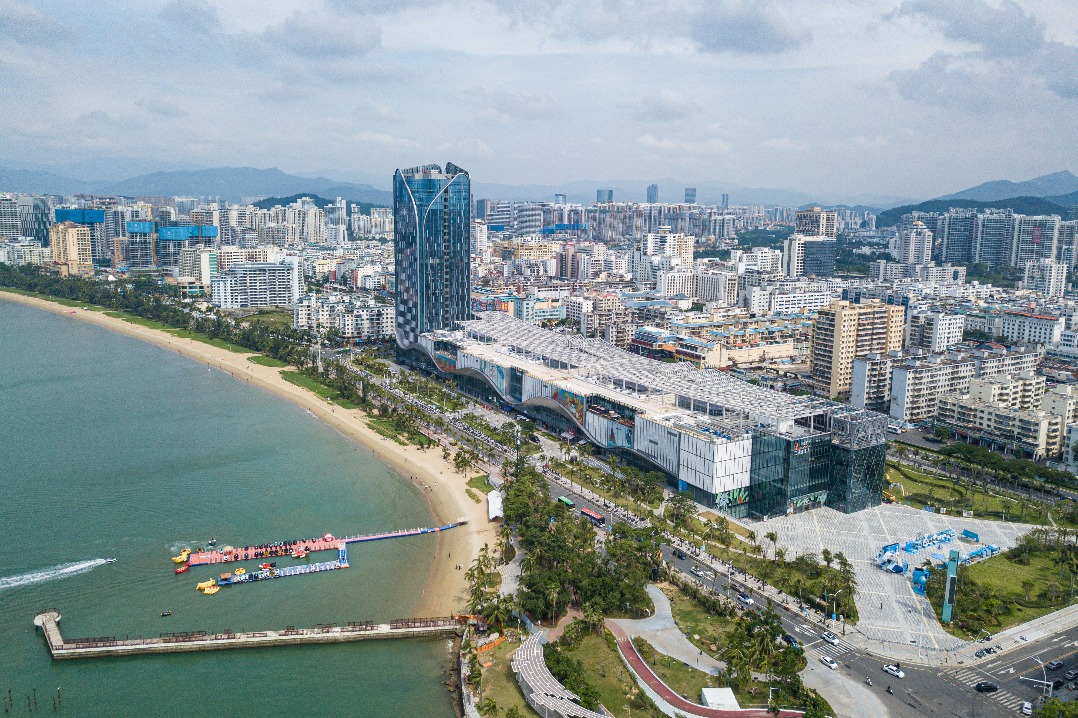Bay area cities offer abundant opportunities for cooperation

Last month I joined the official delegation that conducted a study tour in the Guangdong-Hong Kong-Macao Greater Bay Area in the capacity of a non-official member of the Economic Development Commission. We visited six major cities in the western part of this area, including Guangzhou, Foshan, Zhaoqing, Jiangmen, Zhongshan and Zhuhai. I would like to acquaint our readers with the new developments we saw in those cities.
On April 19 we embarked from Hong Kong to Nansha Port. As one of the pilot free trade areas in Guangdong, Nansha's government attaches great importance to its overall planning, especially in respect of transport. Its regional traffic hub Qingsheng Station is designed to be an integrated transport center. In the future, Guangzhou's metro system, the Guangzhou-Shenzhen-Hong Kong Express Rail Link and many local bus networks will converge here. And its 5,400-square-meter area guarantees ample space for passengers to transfer. For frequent commuters traveling between Hong Kong and Nansha, the good news is that the local government is planning to increase the number of ships and shorten the traveling time from 75 minutes to 60 by upgrading the ships.

Later that day the delegation visited the Sun Yat-Sen University, home to the national supercomputer center. The might of the world's second-fastest supercomputer, Tianhe-2, really amazed me. This 720-square-meter piece was No 1 in the world after June 2013, until it was outperformed by the Sunway TaihuLight in June last year. What's stunning about the computer is how it drives forward smart-city development; its modeling technique strongly enhances precision in predicting weather and natural calamities; with a widespread monitoring system and sophisticated big data techniques, the supercomputer is able to calculate and analyze the streams of people and vehicles in a useful way, so the transport department will know how to, among other things, efficiently site traffic lights and pedestrian routes, place metro stations, and plan reasonable and efficient bus routes For years, the Hong Kong government has been trying to develop Kowloon East into a smart city. The experience of Guangzhou could be useful reference for Hong Kong.
Foshan was the next city visited. Compared to Dongguan and Shenzhen, most Hong Kong investors' preferred destinations, business ties between Foshan and Hong Kong seem much weaker. Actually, manufacturing is a strong point of Foshan, especially in household electrical appliances, ceramic products and construction materials. The 128,900 private enterprises that comprise Foshan's economic backbone have built up some well-known brands in the domestic market. Internationalization is the key to cooperation between Hong Kong and Foshan. Hong Kong can help Foshan companies tap the international market by leveraging its advantages, including the popularity of "Hong Kong design", the city's sophisticated financial sector and its familiarity with international practices.
The delegation took the high-speed train from Guangzhou South Station to Zhaoqing East Station on April 20. Zhaoqing is the largest city in the Greater Bay Area in terms of surface area but its development ratio of land is just 6.5 percent - much lower than any other city in the area - which lets the city apply advanced planning to its subterranean infrastructure. In the city's new developing zone, large space is reserved underground to contain pipelines and cables, giving flexibility should repair or upgrades be required. Hong Kong companies which need large land resources may consider investing in Zhaoqing. Cooperation in the tourism industry is also recommended since the travel time between Guangzhou and Zhaoqing has been shortened to only 35 minutes and the latter has quite a few places of interest, including Seven Star Crags and Dinghu Mountain.
As for the other three southwestern Guangdong cities - Jiangmen, Zhongshan and Zhuhai - I believe economic cooperation among these places will naturally strengthen as construction of the Hong Kong-Zhuhai-Macao Bridge is completed later this year and construction of the Shenzhen-Zhongshan Bridge begins. Besides, cultural communication between Hong Kong and these cities is also highly feasible. Jiangmen is hometown to many overseas Chinese who possess a profound cultural heritage. Zhongshan and Zhuhai are two of the most livable cities in the country, with a high quality of education. I have a bold suggestion that the government set up Hong Kong-style boarding primary and middle schools for Hong Kong students whose parents might not be able to take good care of them, either because of financial constraints or limited time.
All in all, the Guangdong-Hong Kong-Macao Greater Bay Area is full of opportunities for Hong Kong people to tap. As infrastructure facilities improve further, Hong Kong investors definitely have every reason to set their sights on the west bank of Pearl River.
(HK Edition 05/15/2017 page15)
Today's Top News
- China urges Japan to stop challenging intl bottom line with its nuclear ambitions
- US arms sales to Taiwan a dangerous gambit: Editorial flash
- Taiwan opposition lawmakers announce plan to impeach Lai Ching-te
- Boosting consumption will be key in 2026
- No one should remain silent accomplice of racism
- Hainan FTP opens fast lane






























